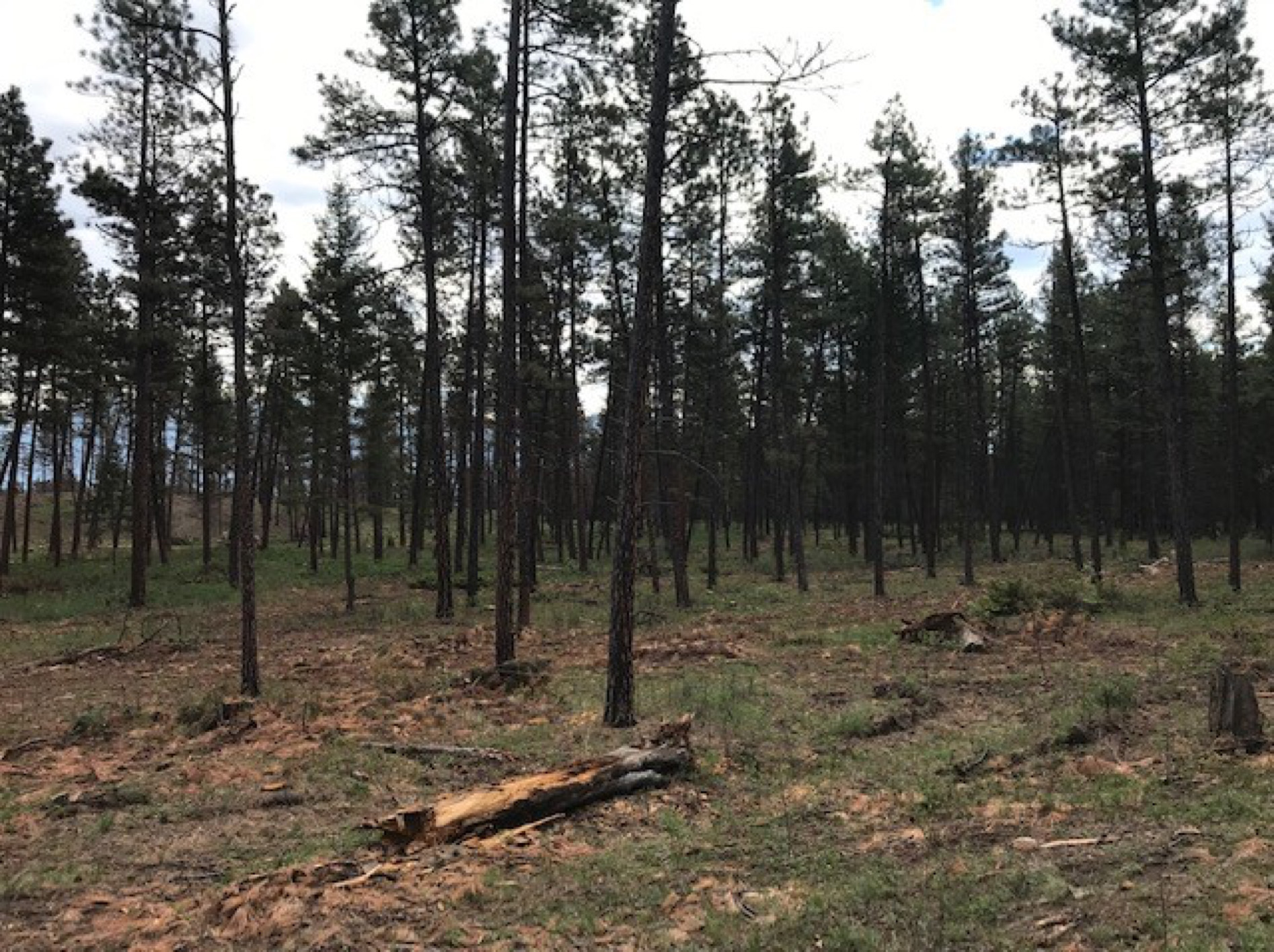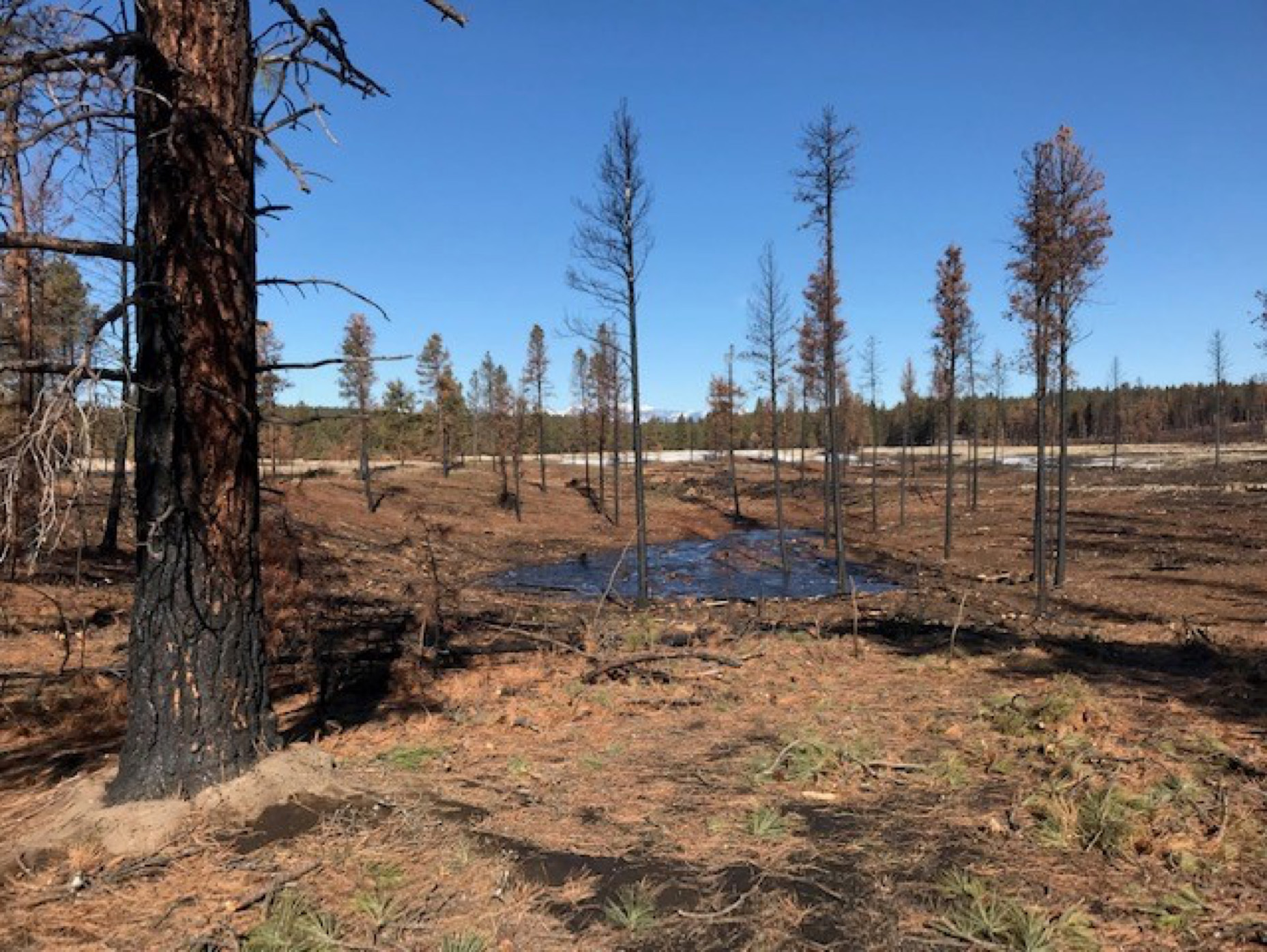On a warm day in June 2018 — John Brace, Registered Professional Forester with the ?aq’am First Nation, took us on a tour of the traditional territory of the Ktunaxa Nation near Cranbrook, B.C. We visited two plots of land that had burned during the preceding year. The stark contrast between the two areas was shocking. One, a wildfire area, was still visibly struggling to recover. The other, an area where a controlled burn was conducted only a few months prior, was already showing promising regrowth.
So why such a remarkable difference? With a full day of immersive learning including a crash course in forest ecology and forest fire management. Brace helped us to understand the many factors involved in the recovery of a forest after wildfire as well as the planning of a controlled burn.
“Wildfire is a natural part of forest ecology, a necessary and regenerative process that keeps forests healthy,” Brace told us. “We are at a period in time where policy has dictated an approach of fire suppression for the last 100 years or so, often referred to as ‘Smokey the Bear Syndrome’.” The result? Forests densely packed with lush trees and ground fuel. Coupled with the hotter, dryer conditions due to climate change we have unintentionally created the conditions for perfect firestorms.
Brace went on to tell us that a resilient forest ecosystem is one that burns more often—every seven to ten years or so in this dry-type near Cranbrook. The picture of a healthy forest in the dry-type on the ?aq’am Reserve ideally has about 150–200 trees per hectare, with roughly ten-metre spacing in between. This provides space and light for grasses to grow, which in turn supports wildlife populations like elk and deer, adds essential nitrogen to the soil and helps prevent soil erosion. At the same time, this spacing maintains some canopy cover to help protect the forest floor during dry conditions.
We learned that composition of the forest matters as well. Diversity in types of trees allows the forest to fare better during fires. The yellow pine has thick bark and with lower intensity ground fires, these trees don’t die. The lodgepole pine, however, has thin bark and can’t protect itself as well. Douglas fir and western larch are fire-adapted with a thick corky bark. Higher intensity fires burning 700–1000 degrees Fahrenheit cause girdling of the bark and will kill even these fire-adapted trees. Girdling completely removes sections of bark from a trunk and eventually kills the tree by preventing nutrient translocation or the carrying of nutrients from the leaves to the roots.
…
The first plot of land we visited had experienced a wildfire in August of 2017. The hot and dry conditions of that year allowed the fire to ignite from a spark let off from machinery in the area. While no homes were lost, many were threatened. This fire was unique because of its location and the large amount of fuel in the area. It started on a floodplain with grasses two–three feet tall. According to Brace, “grass fires are dangerous because they can move very quickly.” In this case, the fire moved uphill, where the heat rises and preheats the areas above. The very intense part of this fire was over in three–four hours and luckily no homes were lost even though it was an interface fire with a group of houses very nearby.
When a fire burns this long and intensely, it can affect the forests’ ability to recover naturally and human intervention is required. It was evident to even our untrained eyes that this was the case here. Even though a year had passed and we were well into the spring season, the soil on the forest floor was grey and thick with ash, showing no signs of spring growth. There were deep impressions in the soil that resembled large dinosaur footprints, but in reality, were the impressions left by tree roots that had been fully eradicated by fire embers burning underground.
What can happen during intense wildfires is the soil layer gets superheated and forms a crust or hydrophobic “water-hating" layer on top. Due to the hydrophobic layer, water was unable to penetrate the soil and silty ash and germinate the seeds underneath to promote regenerative regrowth.
Part of Brace’s portfolio of work was to figure out how to rehabilitate the land. There was a lot of pressure from the community at the time to make some visible progress. From a forest fire fuel management perspective, Brace agreed it was important to harvest burned dead trees and preserve green survivors. “Immediately after the fire, there’s almost a natural beauty to it, with openings created by the fire and a patchwork of green areas skipped by fire” but pretty quickly it can become dangerous as dead trees start to fall. “It would also be a further fire hazard and a continuous source of fuel if another fire went through.”
At the time of our visit, the rehabilitation plan was in the early stages, with Brace favouring the idea of running a salvage logging operation. The trick was going to be finding the right players to both help log the area and bring the logged fuels to market. The idea was that the sale of the salvaged logs would help fund the project itself. With the ground cleared of dead trees, there would also be the opportunity to scarify the soil and break up the hydrophobic layer so rainwater could reach the seeds that were hiding underneath.
A few months after our visit, I received a surprise email from Brace with a few pictures of the wildfire area. With some late spring rain, the grasses and ground plants were able to eventually break through the once ashen ground.
…
We spent the second half of our day at the controlled burn site. It could not have appeared more in contrast to the wildfire site. The burn had taken place only a few months before our visit but there was no visible evidence that a fire had even taken place. Signs of renewal and regrowth were abundant. Low to the ground green grasses were sprouting and beautiful white mariposa lilies dotted the forest floor. Small tree saplings were taking hold, some already nearly a foot in height.
To learn more about the process of conducting prescribed burns we spoke with Scott Driver, Director of Cranbrook Fire and Emergency Services. His detachment works closely with ?aq’am and other forest management organizations to mitigate the city’s wildfire management challenges.
“Despite having four controlled burns planned for 2018—that had been on the books for two years prior as well—there was only one day that presented the correct environmental window of opportunity to carry out the burn,” Driver told us. To safely carry out a prescribed burn, the weather must be under 30 degrees Celsius and over 30 percent humidity. “If these conditions are not present, then a fire can continue living underground and pop up later when you think it’s been extinguished.”
In 2018, there was only one window of opportunity—one day in the entire year—that presented the right conditions for a controlled burn and that went to the ?aq’am burn. That one burn took all of the available resources in the area. Everyone pitched in, from the Ministry of Forests’ wildfire fighters to the municipal fire department to the ?aq’am team. According to Driver, “It was all hands on deck.”
The team started the morning digging a fire break around the controlled burn area. Then a team of ground firefighters lit an apron of grass along the top and side edges of the break using drip torches, pushing it in towards the centre. Next, a helicopter dropped ping pong-sized balls over the centre of the stand. Inside these ping pong balls was potassium permanganate that was then injected with antifreeze. The agitation from falling and hitting the ground exploded the ping pong balls to begin burning from the centre of the controlled burn area.
In this area, the relatively short length - one day in total - and low intensity of the burn created the circumstances allowing the forest to reap the restorative benefits that wildfire is supposed to bring. The controlled burn took four hours for the crew to ignite, one day to burn but many months of planning and an environmental window of opportunity to be possible.
…
When the Beaty Museum contacted us to discuss exhibiting the Fire Followers project I reached out to Brace with an update on the project status. He also had an update for me on the rehabilitation of the wildfire area. They did end up running a salvage logging operation on the wildfire area and were able to find a market for the biomass that was removed. It “looked unlikely at the start that it would turn out this way, but stars aligned,” Brace said. The “main hurdle at the start was how to afford the cleanup work”. If there had been no market for the logged trees, the cost to treat the area would have been paid 100 percent by the community.” In this case, they were able to find a local logger who lived in the area his entire life and logged this kind of forest for his entire career. He knew how to market the logs, what to leave, what to take. “The logger was instrumental in making that happen. We were lucky.”

Wildfire area post-treatment—“we left many more because of green trees that survived a lower intensity burn.”
Photo credit - John Brace.

Wildfire area post-treatment—this is an “area we left very few trees in because it burned so intensely.”
Photo credit - John Brace.
Brace doesn’t have any more controlled burns planned for the immediate future. Right now they are focusing on an overall ecosystem restoration plan for some of the reserve land which includes logging some areas and applying fuel management treatments to others, removing brush and potential fuels from the understory. In the future, Brace is looking towards a system to regularly bring the biomass they get from the brushing and thinning each year to market.